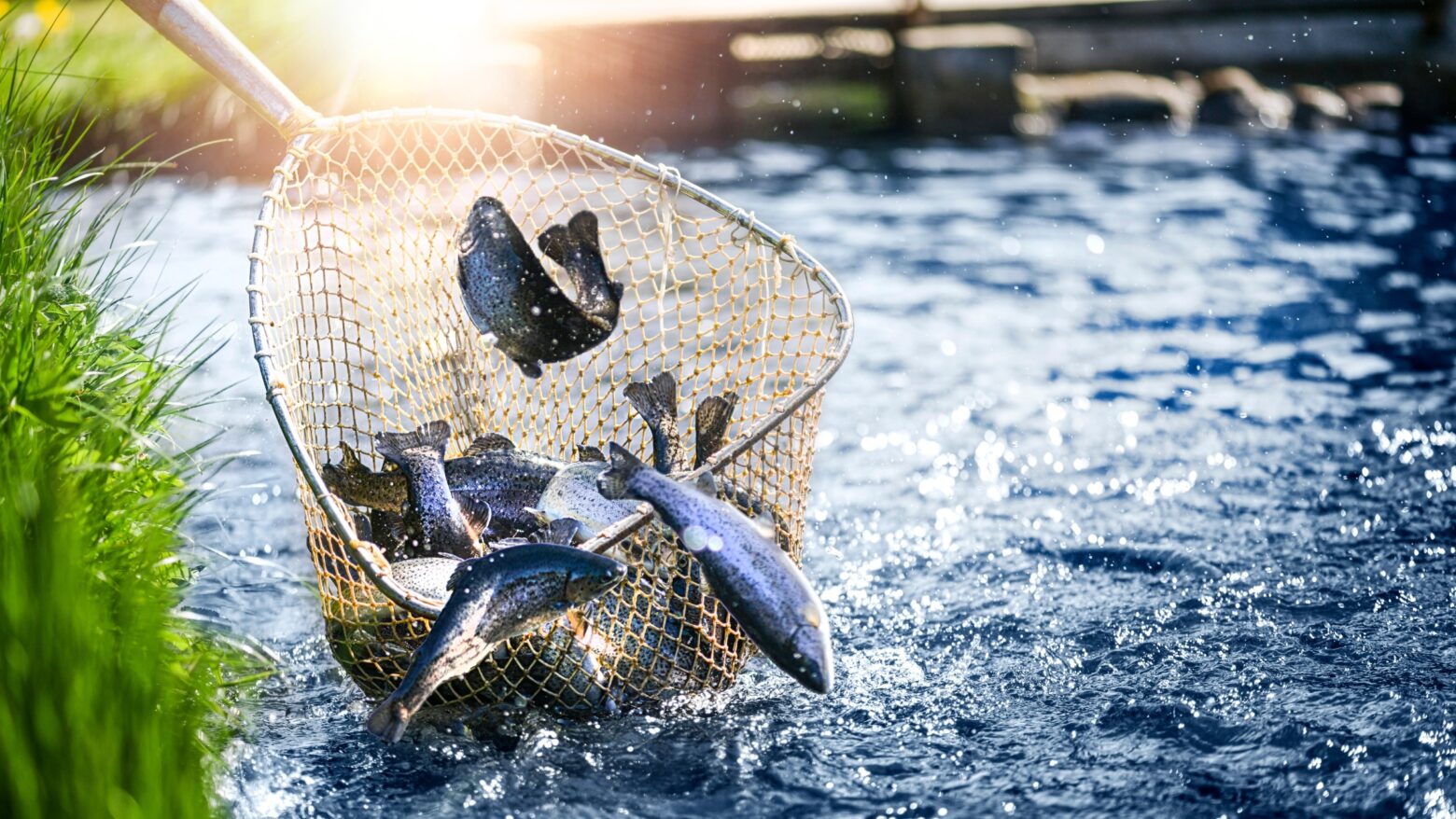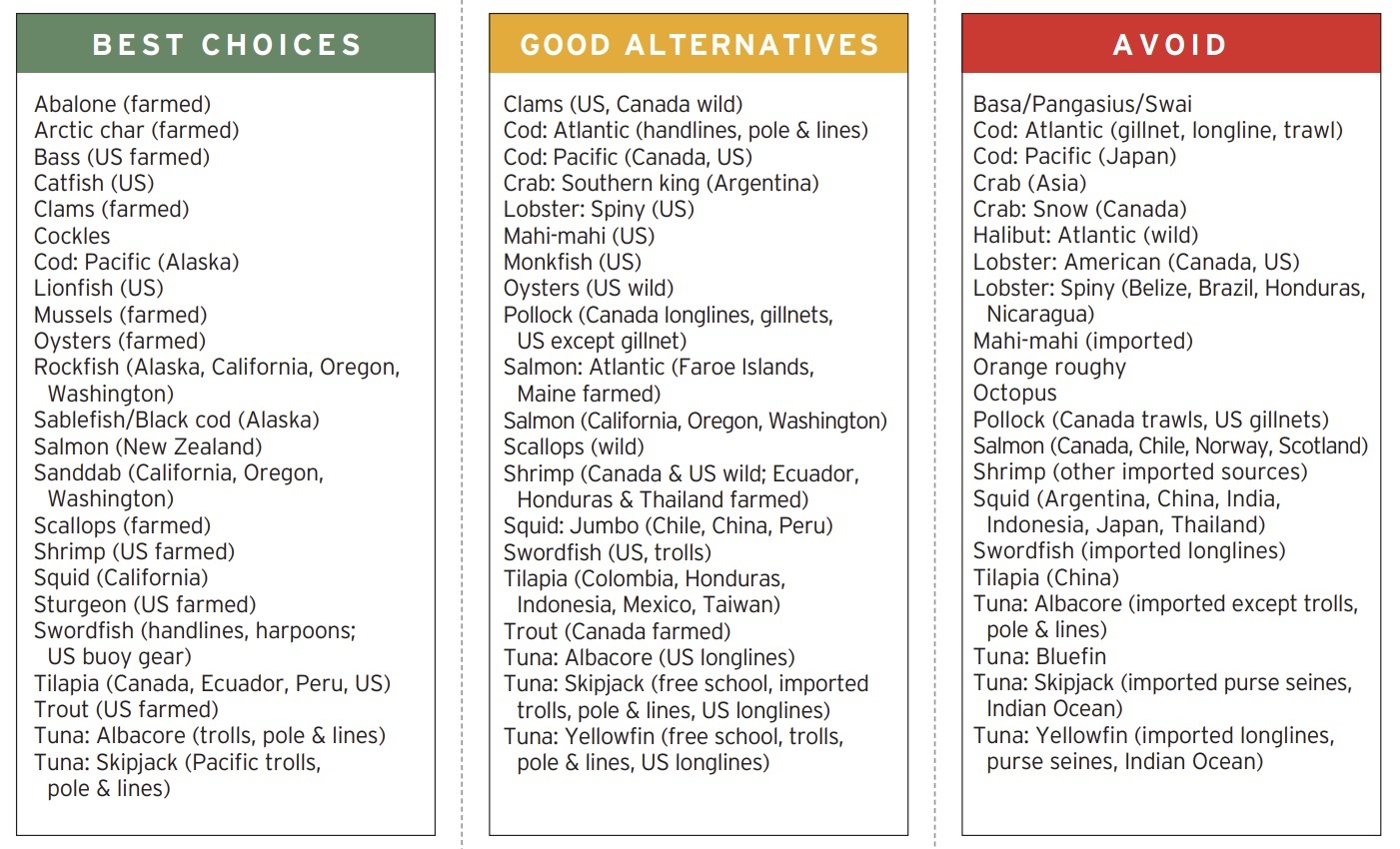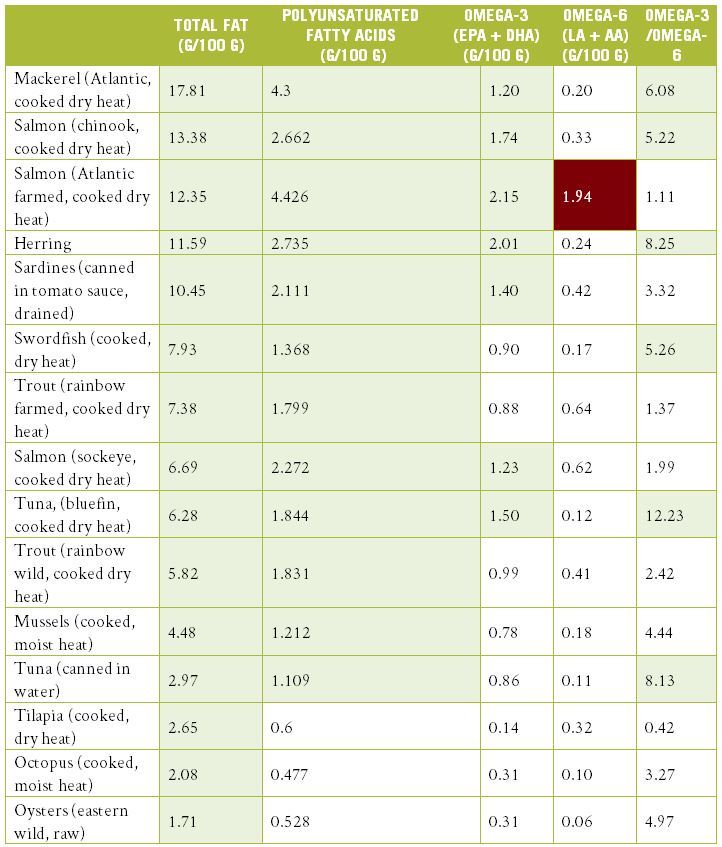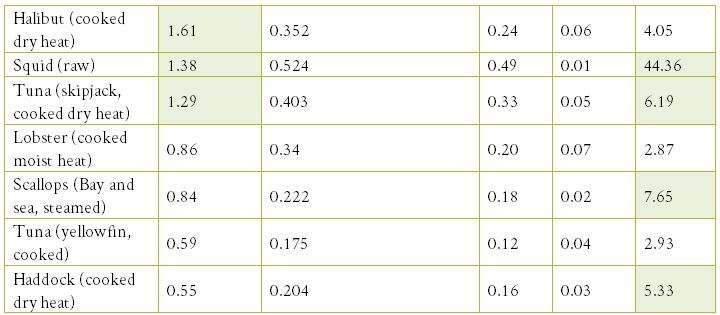Selecting Seafood for Health and Sustainability

There’s no question that seafood is a great source of protein and omega-3 fatty acids, and that it should form an integral part of the Paleo Diet. But seafood doesn’t thrive in polluted waters, overfished waters, or in habitats damaged by fishing gear. So to get the good without the bad—and to ensure we have it for years to come—we need to know which species have the holy trinity of seafood: sustainable, safe, and nutritious.
Sustainable Seafood
Sustainably caught fish may seem like a nice-to-have, but it should really be on par with nutrition for importance when selecting seafood. Not only do we want our food to be harvested or caught in its highest nutritive state, we want that to continue indefinitely.
It hasn’t always been that way, but more and more fisheries are making sustainability a reality by considering the health of ecosystems and fish populations as well as their profits. Seafood Watch® makes science-based recommendations for sustainable seafood.1,2,3 Here’s their list of best choices, good alternatives, and choices to avoid for U.S. consumers.

The seafood recommendations in this guide are credited to the Monterey Bay Aquarium Foundation ©2023. All rights reserved.
Safe Seafood
In the seafood world, mercury, dioxins, and PCBs are the usual suspects when it comes to contamination. They’re not normally features of a “healthy and abundant stock” which is a fundamental criterion for sustainability1—so if you’re choosing sustainable, you’re likely choosing safe too. In addition, Seafood Watch® posts health alerts if there are specific concerns for human health from a fishery.
Mercury, however, is a changing story. Mercury accumulates in fat tissues of large, long-lived predatory fish or shellfish, ultimately ending up on our dinner plates. We’ve been cautioned to limit these species in our diets, but surprisingly, that’s not the whole story.
Mercury readily and irreversibly binds to selenium,4 which means that as long as the fish you’re eating has more selenium than mercury, your body won’t actually be retaining the mercury you ingest. And since the oceans are full of selenium, most ocean fish are perfectly safe to eat.5,6 Simply avoid shark and limit swordfish, tilefish, and king mackerel, or use this infographic to moderate your consumption.
Also keep in mind that in freshwater, mercury and selenium levels vary greatly with the composition of the surrounding soil. Check with your local authorities for health alerts.
Nutritious Seafood
Fish are great sources of vitamins and minerals as well as protein, but the biggest benefit from eating fish is the omega-3 fatty acids EPA and DHA.7 Anyone who’s had king salmon and haddock can tell you, however, that all fish are not created equal when it comes to fat—and they’re not all created equal when it comes to omega-3 to omega-6 ratios either—and that matters! Here’s some nutritional data from the USDA for some popular fish and shellfish.6


Highlighted numbers in the first four columns are amounts greater than 1 g/100 g; highlighted numbers in the last column are the fish with ratios greater than 5. A few things jump out.
- Total fat isn’t everything: the number of fish hitting 1 g/100 g decreases as we move from total fat to polyunsaturated fat to omega-3s.
- Atlantic mackerel, chinook salmon, herring, swordfish, and Bluefin tuna have high total fat and great omega-3/omega-6 ratios.
- Only farmed Atlantic salmon has more than 1 g/100 g of omega-6s.
- All but tilapia have an omega-3/omega-6 ratio greater than 1.
- There doesn’t seem to be a relationship between total fat and the omega-3/omega-6 ratio. There are high fat options with low ratios (Atlantic salmon) and high ratio options with lower fat (squid).
Sustainable + Safe + Nutritious
So can we have our fish and eat it too? Yes! There is an impressively wide array of sustainable options to choose from, and we can assume that they’re safe choices, not only because they’re sustainably caught fish, but because they’re high in selenium. Many of those sustainable options are also fatty fish with great omega-3/omega-6 ratios (anything above 1 is great). But let’s look at how some poor performers compare.
- Atlantic salmon: not sustainably caught, high omega-6s, ratio close to 1
- Bluefin tuna: great fat profile, great ratio, but not sustainable
- Tilapia: sustainably farmed, but lower in fat, ratio less than 1
- Sharks: more mercury than selenium, not sustainably caught
The bottom line: While a lot of seafood looks good in the nutritional breakdown, from a sustainability standpoint, some species may be better than others. So eat your recommended portion of omega-3s, but choose options that tick all the boxes for your health as well as the ocean’s.
References
1. Monterey Bay Aquarium. Developing Seafood Watch® Recommendations. Version: March 1, 2023.
2. Monterey Bay Aquarium. Seafood Watch® Criteria for Aquaculture. Accessed: September 5, 2014.
3. Monterey Bay Aquarium. Seafood Watch ® Criteria for Fisheries. Version: March 31, 2014.
4. Ralston NVC, Ralston CR, Blackwell 3rd JL, Raymond LJ. Dietary and tissue selenium in relation to methylmercury toxicity. NeuroToxicology 2008;29(5):802-11.
7. Kidd PM. Omega-3 DHA and EPA for cognition, behavior, and mood: clinical findings and structural-functional synergies with cell membrane phospholipids. Altern Med Rev 2007;12(3):207-27.
The Paleo Diet Team
The Paleo Diet® team consists of a group of scientists, journalists, experts, and recipe creators who stay at the forefront of nutrition science.
More About The Author




